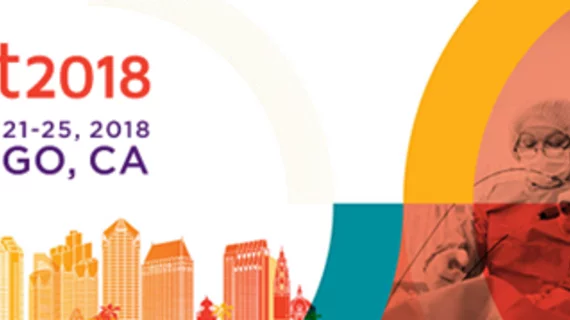Gregg W. Stone, MD, had the unenviable task of condensing the 255-page agenda for next weekend’s Transcatheter Cardiovascular Therapeutics (TCT) meeting into a handful of highlights during a 12-minute media briefing on Thursday, Sept. 13.
Speaking with reporters, Stone admitted he may be biased but said there is “a great deal of interest” in the COAPT trial that he is presenting on Sept. 23 in San Diego. The randomized trial will evaluate whether the prognosis of heart failure patients can be improved by reducing mitral regurgitation (MR) with Abbott’s MitraClip device.
The topic—albeit with a different patient population and smaller sample size—was explored during a recent presentation at the European Society of Cardiology Congress in Munich. Stone said MITRA-FR “was an absolutely negative trial”; the device was found to be safe and reduce MR but it didn’t improve the primary outcome of all-cause death or rehospitalization for heart failure at 12 months compared to optimal medical therapy.
Stone said he couldn’t go into too much detail about the potential impact of COAPT because the results remain under embargo until they are presented at TCT. However, he hinted that the trial may have a significant impact on clinical practice.
“The studies are different and hopefully when COAPT is presented it will add some clarity to the field,” said Stone, a principle investigator of the study and course director for TCT. “It will have major implications not only for the MitraClip but on the field of transcatheter mitral valve therapy.”
Stone also highlighted other late-breaking research that will be presented at the meeting, including:
- SOLVE-TAVI: a 2x2 randomized trial comparing balloon-expandable TAVR valves versus self-expanding ones, as well as different anesthetic approaches. “It’s the largest head-to-head study comparing self-expanding versus balloon-expanding valves for TAVR, but also then looking at what’s a very hot topic about general anesthesia versus more mild, conscious sedation, so I think that’s going to be of great interest,” Stone said.
- ULTIMATE: a randomized study comparing intravascular ultrasound guidance to angiographic guidance for patients receiving drug-eluting stents (DES).
- A set of head-to-head studies evaluating different DES. “I think there’s going to be a lot more clarity as to whether some of these innovations in metallic, drug-eluting stents have led to improvements in the field—and that may clearly direct as to what kind of stents are used for the next several years to come,” Stone said.
- Two presentations on bioresorbable scaffolds—the one-year results of ABSORB IV and the initial report from the COMPARE ABSORB trial, which randomized high-risk patients with complex lesions to either a bioresorbable stent or a XIENCE drug-eluting stent.
Conference organizers appear to be going all in for TCT’s 30th anniversary, with 1,500 peer-reviewed abstracts, about 700 challenging case presentations and dozens of keynote interventional studies that will be released along with the 27 late-breakers.
For the first time, the meeting will feature a large training center, Stone said, consisting of eight pavilions where physicians can practice skills in the cath lab, interpret different types of images, cross chronic total occlusions and perform simulated TAVRs and mitral valve repairs, among other techniques.
“More so than I think ever at TCT, when they leave the meeting they’ll have actually learned a practical skill which they can take back to their patients,” Stone said.

